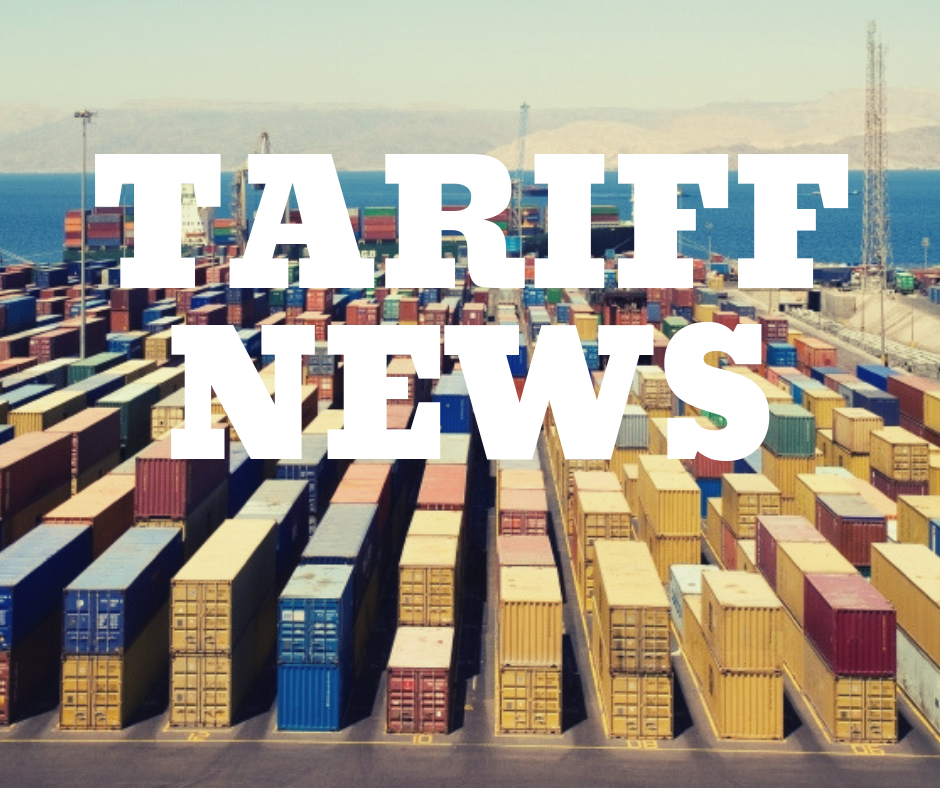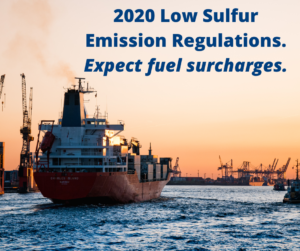
The last 12 months have been among the most memorable in the freight forwarding business. We kicked off 2019 with the frigid Polar Vortex, recovered and spent the year navigating tariffs. While we can never predict exactly what will happen in the New Year, we are carefully watching and studying tariffs and the ripple effect.
We also are keeping up on the new IMO2020 regulation and how it is impacting client fuel costs. Read on for more information on these 2020 topics.
Tariffs
Without a doubt, tariff duty rates predominant ed the industry in 2019, and the impact will continue in 2020. Pre-shipping ahead of the rate increases will be a continued strategy to manage budgets.
ed the industry in 2019, and the impact will continue in 2020. Pre-shipping ahead of the rate increases will be a continued strategy to manage budgets.
With this year being a Presidential election, a wait and see approach is on trend. Yet the impact to the industry will continue to take shape as manufacturing production shifts to areas of Southeast Asia and other parts of the world that are not affected by the trade war.
IMO 2020 new regulations for fuel emissions
Called IMO2020 (International Marine Organization), or more informally Low Sulfur Surcharge, this new regulation is about carriers reducing sulfur emissions proven to cause a high incidence of cardiovascular illness and lung cancer. These illnesses are linked to some 100,000 premature deaths annually.
The regulation takes effect on Jan. 1, 2020, and many carriers rolled it out starting with their Dec. 1, 2019 sailings. The bottom line is that this is going to hit the bottom line. In fact, Hapag Lloyd estimates cost to the industry to make the shift is up to $60 billion with cost being passed on to the customer
 Announced in 2016, the regulation calls for sulfur emissions to be below .05%. To meet the requirement options are upgrade to expensive scrubbers; purchase cleaner high-quality fuels; or scrap the fleet to rebuild compliant ships. So far it appears the option to purchase cleaner high-quality fuels is the most favored.
Announced in 2016, the regulation calls for sulfur emissions to be below .05%. To meet the requirement options are upgrade to expensive scrubbers; purchase cleaner high-quality fuels; or scrap the fleet to rebuild compliant ships. So far it appears the option to purchase cleaner high-quality fuels is the most favored.
The impact: the average price of low-sulfur fuel oil went up through the first week of December in four key ports, reaching $543 per metric ton, as demand from shipping ramps up ahead of the Jan. 1 IMO 2020 deadline.
Since the disbanding of the Trans-Pacific Stabilization Association standardized costs for fuel previously called Bunker Adjustment Factor (BAF) are no longer in place. This means each line or alliance can use a different formula (and phrase) to calculate the additional costs.
Clearly, clarity behind this new regulation, how to best navigate it and its pricing will continue to be a trend through 2020.
Manufacturing on the move
Manufacturers are moving out of China for alternative production options to skirt around imposed tariffs. According to the Nikkei Asian Review, “Since last June, 33 listed companies informed China’s two stock exchanges of their plans to set up or expand production abroad…” This trend will continue in the New Year.
In Asia, Vietnam is quickly earning new manufacturing business. This was happening pre-tariffs and accelerated with the trade war. For example, a large Chinese upholstery producer built a 2.5 million square foot factory in just nine months. Their containers shipped went from zero to 1,000 per month, according to a recent Forbes article. The same article cites retailer Ashley Home, which said it has moved 50 to 70% of its import mattress production out of China and into Vietnam.
A 2019 survey of members of the American Chamber of Commerce in China found that approximately 40% had relocated manufacturing facilities outside China or were considering doing so. Southeast Asia came out on top as the alternative location, with nearly 25% of respondents indicating a preference for the region.
Travel around the globe to Eastern European where countries are on trend as a hot spot for manufacturing. Slovakia, Czech Republic, Hungary and Poland are among the fastest developing countries in the world. Couple that with the European Union Horizon 2020 investment initiative and it’s a favorable economic climate for manufacturing without tariff implications.
Shifting steamship routes
As manufacturing hubs move out of China and into other Asian countries and Europe, it’s forcing steamship lines to shift routes. The demand to move cargo shows U.S. imports from Asian countries, excluding China, are up 15.1% year over year. Carriers are responding.
They added four strings for a total of 18 weekly services from Southeast Asia to North America this past year, according to Sea-Intelligence Maritime Consulting. Ships leaving Vietnam are mostly full and are being routed through the Suez Canal, which means cargo is now entering the United States through east coast ports instead of the traditional west coast.
Data shows West Coast ports experienced a 9.2% decline in imports from China, and a 3.2% decline in imports from all of Asia from January to October, according to PIERS. Meanwhile, East Coast volumes increased 5% January to October year over year, and volumes at Gulf Coast ports increased 17.4%.
These topics will continue to unfold in the New Year as changes to the global trade system create shifts how business is done. Company owners and supply chain managers are advised to carefully watch these trends, understand the impact and manage freight for manufacturing and production accordingly. If you have questions or need support, contact Cargo Services for a conversation about how we can support your company’s freight forwarding requirements.
